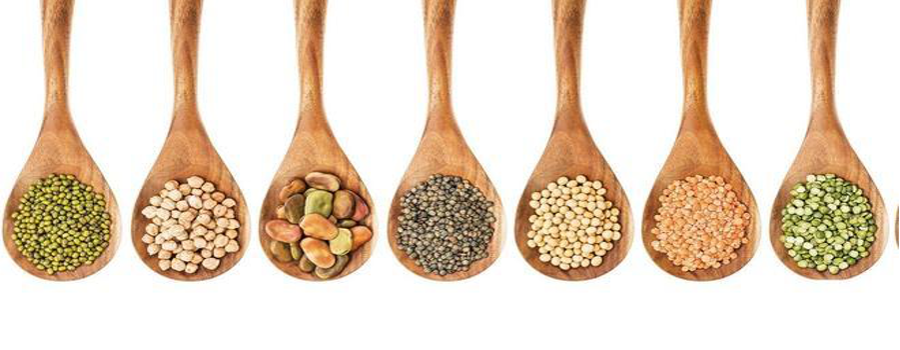The United Nations, led by its Food and Agriculture Organization (FAO), has launched the 2016 International Year of Legumes under the slogan “nutritious seeds for a sustainable future”. The objective is raising awareness about the protein power and health benefits of all kinds of dried beans and peas, boost their production and trade, and encourage new and smarter uses throughout the food chain.

Clearly we want to eat better. Healthier, more natural, more plant products even more sustainable. We are conscious of what consumption of certain nutrients means for our health, such as dietary fiber that is known to be beneficial for health because affects in the intestinal function, weight control, reduce the risk of certain heart diseases and type II diabetes. And the fashionable proteins (even better if they are from plant origin) play a structural function in our body. We want to consume more vitamins, minerals and bioactive compounds that help to prevent some diseases, to have good health and even delay cellular aging. Moreover, we know the benefits of following the Mediterranean Diet pattern; rich, varied and healthy in which the consumption of our typical food products and ways of cooking are included.
However, even though we have all this knowledge, according to data recently released by the World Health Organization (WHO), consumption of fast food in Spain has increased in recent years and, even worse, this data is expected to increase to 50 % over the next five years.

But… consumers, we’re in luck! We have within our reach tiny packages with all those nutrients that we are asking for. Their name are pulses and are considered gluten-free and functional foods that exert a positive effect on certain metabolic functions such as the cholesterol levels, the glycemic index, reduces lipid accumulation in the body, promote intestinal transit and can prevent the occurrence of certain types of cancer, osteoporosis, cardiovascular disease or diabetes. What´s more, they are sold at the supermarket and have a very affordable price.
Undoubtedly, legumes should be an important part of the diet because they are a great source of proteins and carbohydrates. The average protein content of legumes varies between 17 and 40%, considerably higher than the cereals (3-7%) and are considered proteins of high biological value and approximately equal to the protein content in the meat. They are also rich in complex carbohydrates, including significant amounts of dietary fiber (9-27 %) and a low fat content.
Moreover, the legumes are very important from the point of view of maintaining the agricultural ecosystem due not only to the cultivation area occupied worldwide, but also to the ability for fixing atmospheric nitrogen increasing soil fertility and reducing the use of nitrogen fertilizers. Waste footprint (carbon footprint + water footprint) of legume crops is lower than other crops, so it promotes sustainability and contributes to mitigate climate change. And last but not least, legumes are even more important in developing countries for their good shelf life and low cost.
It´s clear that legumes are an essential part of many diets in the world including the Mediterranean. Not in vain, in the new healthy eating pyramid, legume consumption is recommended at least twice a week. The new pyramid considers the importance of consuming traditional, local and friendly products with the environment, such as legumes.
For all this reasons, Food and Agriculture Organization (FAO), has launched the 2016 International Year of Pulses. Nevertheless, despite its importance and the growing of legumes has increased by 20% over the last 10 years (mainly due to animal feed demand) its consumption has declined in favor of other protein sources such as meat. This decline is due to social and cultural reasons; from our new life style (we are cooking less and less), to a perception of legumes as “poor food” or even the rejection of their consumption because they produce flatulence.
Challenges in innovation to boost consumption

It is very clear: food industry must innovate to cover this demand through ready-to-eat high quality dishes based on legumes that meet with a good nutritional profile, or, for example, legumes in the form of flour.
Pulse flours are a very good alternative to increase consumption of legumes, especially in children. With an appreciable nutritional value, good dietary fiber source, and gluten-free, these ingredients just need a little imagination, a little technology and a big desire to investigate to get very good products such bread, biscuits, pasta or snacks.
- A better life and a better future; right to foods - 16 October 2024
- Food reformulation; a step forward, that it is possible - 21 May 2024
- World Food Day; with soul of water - 16 October 2023
